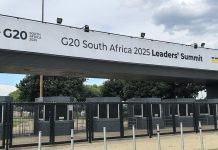Africa-Press – South-Africa. The African Growth and Opportunity Act (AGOA) gave South Africa an edge even with the Trump tariffs in full effect. But now it has lapsed, the edge is lost, and potential plans to extend it are sitting in limbo.
However, even if the trade deal is somehow revived, there is no guarantee that South Africa will be part of the renewal, given that its participation has been in question for years.
Not only has the lasped AGOA ended the beneficial trade agreement, it has also reintroduced further tariffs and duties that were waived under the Act, adding to the pile of tariffs already hitting South Africa.
AGOA officially came to an end on 30 September 2025 when the programme reached its end date with no extension.
While the United States White House has expressed interest in extending the programme by another year, the actual decision to do so rests with the US Congress.
Unfortunately for South Africa, Africa, and the thousands of businesses and hundreds of thousands of workers who depend on the Act, the United States government has shut down—now on day 34.
This means that Congress is not sitting, and that there is no clear timeline for an extension, if any.
AGOA granted qualifying members beneficial access to US markets. South Africa was by far the biggest beneficiary of the deal, seeing almost R300 billion in trade through AGOA between 2019 and 2024.
However, South Africa’s continued presence in the Act has long been under question, even before the second Trump administration.
There has long been bipartisan (Republican and Democrat) concern that South Africa’s moves against US (Israel) and strong support for America’s enemies (Russia, China, Iran) on the global stage have gone against US interests—a key disqualifier for the Act.
Even before factoring in the geopolitics, though, concerns were raised previously that South Africa’s economy and financial markets were too big and mature to be included in the programme, which was intended for much smaller and struggling economies in Africa.
Tariffs tariffs tariffs
DTIC minister, Parks Tau
Nevertheless, South Africa continued to be a part of the programme, and key industries, like the automotive and agrictultural sectors, become dependent on the trade benefits.
Various data, including from the South African Reserve Bank, now point to billions of rands in trade, and tens of thousands of jobs being on the line now that it is gone.
Unfortunately, the problems and costs do not end there.
The termination of the Act has been exacerbated by the additional trade tariffs that have been put in place by the Trump administration this year.
In April 2025, the US announced reciprocal tariffs against numerous countries, including a 30% reciprocal tariff on products from South Africa.
After a 90-day pause, the tariff came into effect from 7 August 2025.
The 30% rate was on top of a 25% tariff on automobiles and parts across the board and further tariffs on steel.
However, tariffs are compounded by the “most favoured nation” (MFN) duty—a customs duty that a country must extend equally to all its trading partners that are members of the World Trade Organisation (WTO).
Under AGOA, the MFN duty was waived, thus giving AGOA beneficiary countries a margin of preference, according to the Department of Trade and Industry.
With AGOA ended, this is no more, meaning the tariffs are now even higher than initially thought. The MFN rate varies from country to country, and can be waived again through a new trade agreement.
However, while there is hope for South Africa and the US to reach new terms of trade, there has been no formal agreement signed.
Source: businesstech
For More News And Analysis About South-Africa Follow Africa-Press






